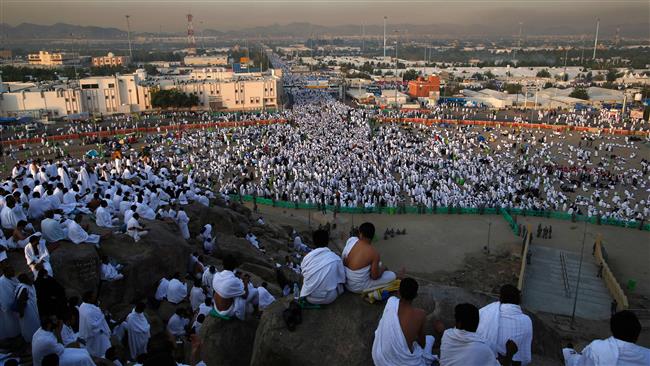
RNA – On Sunday, the worshipers began day-long prayers and recitals of the Holy Quran on a rocky hill known as Mount Arafah, east of the city of Makkah, where Prophet Muhammed gave his last Hajj sermon.
The Day of Arafah falls on Dhul-Hijjah 9, the final month in the Islamic calendar. It comes one day before Eid al-Adha (the Feast of Sacrifice).
After preliminary rituals this week at the Grand Mosque in Makkah, the pilgrims moved eastwards on Saturday to Mina neighbourhood and then several kilometers further to Mount Arafah.
The worshipers are following in the footsteps of Prophet Muhammad, who performed the same rituals about 1,400 years ago.
For the first time in more than three decades, Saudi Arabia’s radical Grand Mufti Shaykh Abdul-Aziz Al Shaykh will not be delivering this year’s Hajj sermon. He preaches Wahhabism, a radical “ideology” that inspires Takfiri terrorists across the world.
Iranians are not attending the Hajj pilgrimage this year because of the failure of Saudi authorities to ensure the pilgrims’ safety following last year’s human crush during the rituals in Mina.
The tragic incident took place when two large masses of pilgrims converged at a crossroads during the symbolic ceremony of the stoning of Satan in Jamarat in September 2015.
Saudi Arabia claims that nearly 770 people were killed in the incident; however, Iran, which had the greatest number of deaths among foreign nationals, has put the death toll at about 4,700.
The Hajj is one of the five pillars of the holy faith of Islam that every able-bodied and financially able Muslim is obliged to undertake during their lifetime.
R111/112/C